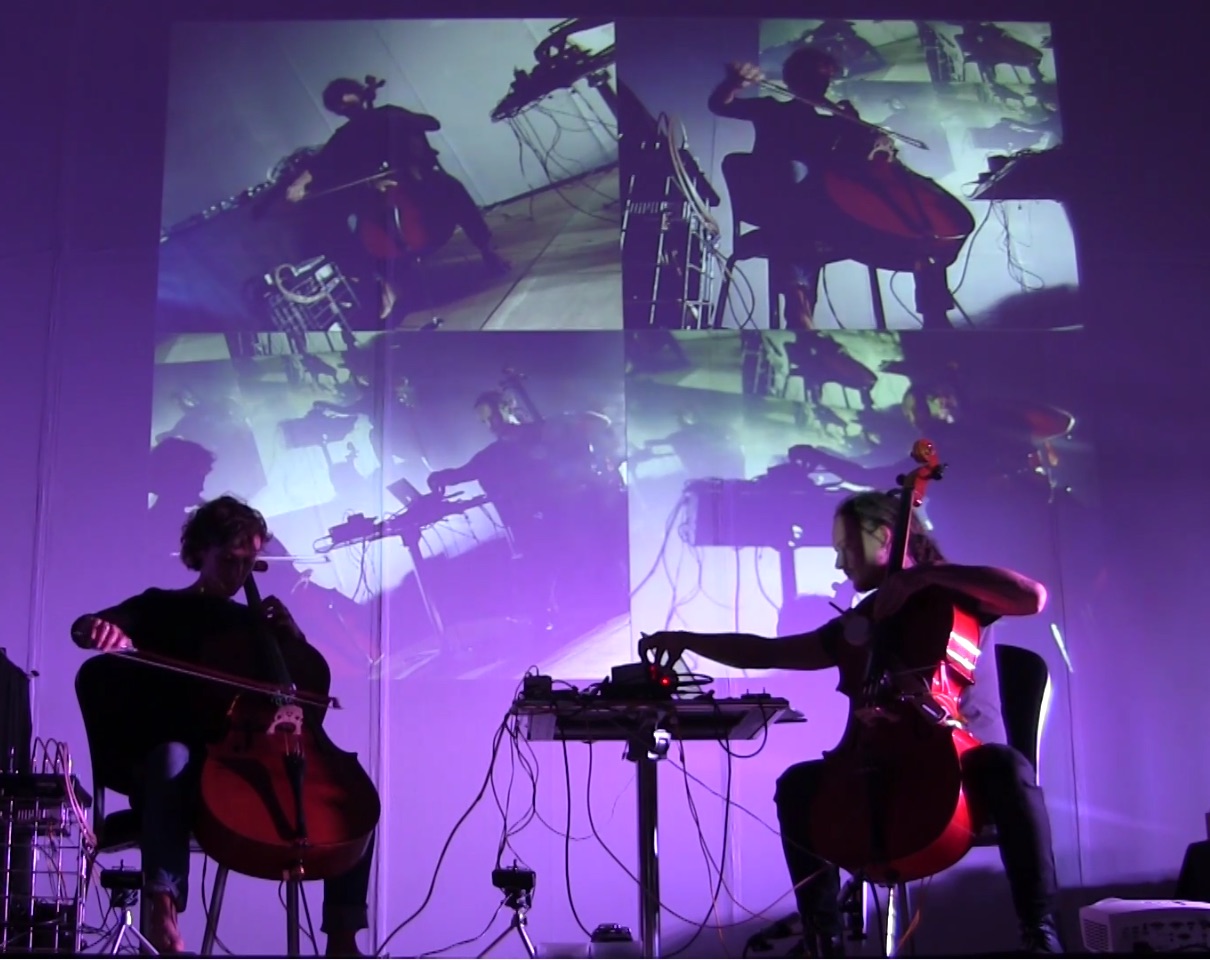
Festival of Algorithmic and Mechanical Movement, Sheffield, UK, 2016
Live @ Algomech 2016
We experimented with various bits of hardware to influence the sounds of the cellos: clothes pegs, laser printer parts, screwdrivers. The pegs work well when placed on individual strings just above the bridge; as the strings vibrate, they vibrate themselves and react against the motion of the string. We both used contact mics at the start of the gig, which were connected directly into the transducers on the cellos. Playing the cellos with these is a bit like probing them with stethoscopes to find live points - felt like a cruder, sonic version of the analyses Hans Johansson carried out, to determine the nodes of oscillation on the instrument bodies.
Not surprisingly the quality of the contact mics makes a huge difference. Cheap piezo’s mounted on wood are super sensitive to positioning: a mm is the difference between a brutal (maybe not in a nice way) shriek and silence; somewhere in between sits a sweet spot of beautiful tones. The more considered build of the JRF contact mics, on the other hand, have a much wider range of acoustic joy. Great satisfaction is to be had in dynamically probing the instrument in this novel gestural way. I fell into 3 main approaches: rapidly scan the front and back surfaces to pick up changing responses across the body, which gives a kind of souped up Australian magpie warbling. Moving one slowly across the front surface whilst varying the pressure of another on the bridge; this closes and opens another feedback short circuit in the cello, and affords control-able pitched, pulsing. Finally, varying the distance between cello body and contact mic by holding it further into your palm and cupping fingers up and down creates a super satisfying sub-bass.
GIG
gig